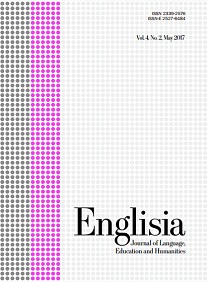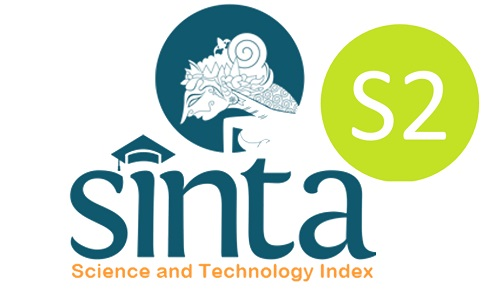THE TYPES OF REQUEST EXPRESSIONS USED IN NOVEL 'HARRY POTTER AND THE CHAMBER OF SECRETS': Their Appropriateness to ESL/EFL Teaching for Junior High School Students in Indonesia
DOI:
https://doi.org/10.22373/ej.v4i2.1314Keywords:
request expressions, English syllabus, speech acts, 2006 curriculum, authentic materialAbstract
Novels can be authentic sources for learning ESL/EFL, especially in non-English speaking countries. They may present reliable learning references in the absence of native speakers. This article aims to identify the types of request expressions originated in novel 'Harry Potter and the Chamber of Secrets' as well as their appropriateness for teaching ESL/EFL in aligment to current applied curriculum (2006 curriculum) in junior high school level in Indonesia. This research employed a qualitative research which was based on content analysis methodology. The data analysis revealed the types of request expressions (Tsui, 1989) generated out of 110 items uttered by the characters in the novel. 65.5% of the finding matched the nine request expressions learning materials embedded in the 2006 curriculum. Indeed, this finding may significantly contribute to the addition of authentic English learning source, especially in teaching speaking skill.Downloads
References
Ainy, S. (2008). Defining Literature and Texts Relevant to an EFL Classroom. Esl Journal, 10, 1-2.
Badan Standar Nasional Pendidikan. (2006). Panduan penyusunan kurikulum tingkat satuan pendidikan jenjang pendidikan dasar dan menengah. Jakarta: BSNP.
Bolton,K.(2008). English in Asia, Asian Englishes, and the issue of proficiency. English Today, 24(2), 3.
Floris F. D., Loanata, V. N. (2012). The influence of social distance in the use of request strategies in the proposal movie. Lingua: Jurnal ilmu bahasa dan sastra,6(3), 310-311.
Guariento, W. & Morley, J. (2001).Text and task authenticity in the EFL classroom. ELT Journal 55(4), 347-353.
Halupka-Rešetar, S. (2014). Request modification in the pragmatic production of intermediate esp learners. Journal of English for specific purposes at tertiary level, 2(1), 29-47.
Hinkel, E. (2006). Current perspectives on teaching the four skills. Tesol Quarterly, 40(1), 109-131.
Tarone. E. (2005)Speaking in a second languageinHandbook of Research in Second Language Teaching and Learning by Eli Hinkel, Erlbaum, Mahwah, NJ, London (2005), pp. 485–502
HiÅŸmanoÄŸlu, M. (2005). Teaching English through literature. Journal of Language and Linguistic studies, 1(1).
Hwang, C. C. (2005). Effective EFL education through popular authentic materials. Asian EFL Journal, 7(1), 90-101.
Jucker, A. H., & Taavitsainen, I. (Eds.). (2008). Speech Acts in the History of English. Amsterdam: John Benjamins
Marianingtyas, S. P. (2007). An analysis of Requestives in the Novel the Glass House by Lynn Bushell and Its Implication to Teaching English. Universitas Sebelas Maret, Surakarata, Indonesia.
Pellicer-Sánchez, A., & Schmitt, N. (2010). Incidental vocabulary acquisition from an authentic novel: do things fall apart?. Reading in a Foreign Language, 22(1), 31.Rowling, J. K. (1999). Harry potter and the chamber of secrets. New York: Scholastic.
Raimes, A. (1990). The TOEFL test of written English: Causes for concern.TESOL quarterly, 24(3), 427-442.
Richard, J.C. (2001). Curriculum development in language teaching. Cambridge: Cambridge University Press
Trites, R. (2001). The Harry Potter novels as a test case for adolescent literature. Style, 35(3), 472-485. retrieved from http://www.jstor.org/stable/10.5325/style.35.3.472
Tsui, A.B.M., (1987). Aspects of the classification of illocutionary acts and the notion of the perlocutionary act. Semiotica 66(4):359-377.
Tsui, A.B.M., (1989). Systemic choices and discourse processes. Word, 40(1-2), 163-187.
Yule, G. (1996). Pragmatics. Oxford: Oxford University Press.
Downloads
Published
Issue
Section
License
Proposed Policy for Journals That Offer Open Access
Authors who publish with Englisia journal agree to the following terms:
- Authors retain copyright and grant the journal right of first publication with the work simultaneously licensed under a Creative Commons Attribution License that allows others to share the work with an acknowledgement of the work's authorship and initial publication in this journal.
- Authors are able to enter into separate, additional contractual arrangements for the non-exclusive distribution of the journal's published version of the work (e.g., post it to an institutional repository or publish it in a book), with an acknowledgement of its initial publication in this journal.
- Authors are permitted and encouraged to post their work online (e.g., in institutional repositories or on their website) prior to and during the submission process, as it can lead to productive exchanges, as well as earlier and greater citation of published work (See The Effect of Open Access).









